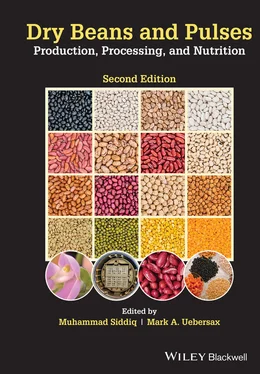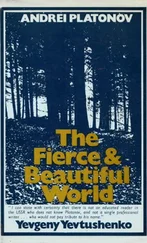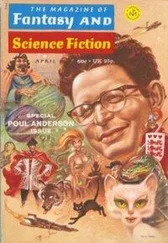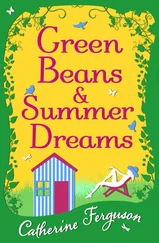Dry Beans and Pulses Production, Processing, and Nutrition
Здесь есть возможность читать онлайн «Dry Beans and Pulses Production, Processing, and Nutrition» — ознакомительный отрывок электронной книги совершенно бесплатно, а после прочтения отрывка купить полную версию. В некоторых случаях можно слушать аудио, скачать через торрент в формате fb2 и присутствует краткое содержание. Жанр: unrecognised, на английском языке. Описание произведения, (предисловие) а так же отзывы посетителей доступны на портале библиотеки ЛибКат.
- Название:Dry Beans and Pulses Production, Processing, and Nutrition
- Автор:
- Жанр:
- Год:неизвестен
- ISBN:нет данных
- Рейтинг книги:5 / 5. Голосов: 1
-
Избранное:Добавить в избранное
- Отзывы:
-
Ваша оценка:
- 100
- 1
- 2
- 3
- 4
- 5
Dry Beans and Pulses Production, Processing, and Nutrition: краткое содержание, описание и аннотация
Предлагаем к чтению аннотацию, описание, краткое содержание или предисловие (зависит от того, что написал сам автор книги «Dry Beans and Pulses Production, Processing, and Nutrition»). Если вы не нашли необходимую информацию о книге — напишите в комментариях, мы постараемся отыскать её.
The second edition of the most complete and authoritative reference on dry beans production, processing, and nutrition available Dry Beans and Pulses: Production, Processing, and Nutrition
Dry Beans and Pulses: Production, Processing, and Nutrition, Second Edition
Dry Beans and Pulses Production, Processing, and Nutrition — читать онлайн ознакомительный отрывок
Ниже представлен текст книги, разбитый по страницам. Система сохранения места последней прочитанной страницы, позволяет с удобством читать онлайн бесплатно книгу «Dry Beans and Pulses Production, Processing, and Nutrition», без необходимости каждый раз заново искать на чём Вы остановились. Поставьте закладку, и сможете в любой момент перейти на страницу, на которой закончили чтение.
Интервал:
Закладка:
40 Kaplan, L. (1965). Archeology and domestication in American Phaseolus (beans). Economic Botany 19: 358–368.
41 Kelly, J.D. (2010). The Story of Bean Breeding. Available at https://www.canr.msu.edu/beanbreeding/_pdf/Story_of_Bean_Breeding_in_the_US.pdf(accessed March 23, 2021).
42 Kelly, J.D. (2020). Personal communication
43 Kelly, J.D., Hosfield, G.L., Varner, G.V., Uebersax, M.A., & Taylor, J. (1999). Registration of 'Beluga' Alubia bean. Crop Science 39: 294.
44 Kelly, J.D., Varner, G.V., Hosfield, G.L., Uebersax, M.A. & Taylor, J. (2006). Registration of ‘Capri’ cranberry bean. Crop Science 46: 2706.
45 Kelly, J.D., Varner, G.V., O'Boyle, P. & Long B. (2009). Registration of ‘Zorro’ black bean. Journal of Plant Registrations 3: 226–230.
46 Kigel, J., Rosental, L. & Fait, A. (2015). Seed physiology and germination of grain legumes. In: Grain Legumes (ed. A.M. De Ron ), pp. 327–363. New York, NY: Springer.
47 Ladizinsky, G. (1979). Seed dispersal in relation to the domestication of Middle East legumes. Economic Botany 33: 284–289.
48 Lee, J.P., Uebersax, M.A., Zabik, M.E., Hosfield, G.L. & Lusas, E.W. (1983). Physiochemical characteristics of dry‐roasted navy bean flour fractions. Journal of Food Science 48: 1860–1862, 1875.
49 Luthria, D.L. & Pastor‐Corrales, M.A. (2006). Phenolic acid profiles of beans commonly consumed in the United States. Annual Report of the Bean Improvement Cooperative 49: 6–7.
50 MBC (Michigan Bean Commission). (2020). Bean Classes. Available at https://michiganbean.com/# (accessed July 4, 2020).
51 McEwen, T.J., Dronzek, B.L. & Bushuk, W. (1974). A scanning electron microscope study of faba bean seed. Cereal Chemistry 51: 750–757.
52 Moïse, J.A., Han, S., Gudynaitę‐Savitch, L., Johnson, D.A. & Miki, B.L. (2005). Seed coats: structure, development, composition, and biotechnology. In Vitro Cellular & Developmental Biology‐Plant 41: 620–644.
53 Navabi, A, Rupert, T., Park, S.J., Yu, K., Smith, T.H. & Pauls, K.P. (2103). Apex common bean. Canadian Journal of Plant Sciences 93: 131–135.
54 Njoroge, D.M., Kinyanjui, P.K., Christiaens, S., Shpigelman, A., Makokha, A.O., Sila, D.N. & Hendrickx, M.E. (2015). Effect of storage conditions on pectic polysaccharides in common beans (Phaseolus vulgaris) in relation to the hard‐to‐cook defect. Food Research International 76: 105–113.
55 Novak, R. & Moore, M.D. (2015). Seed certification and seed quality. In: Dry Bean Pest Management & Production, 3rd edition (eds. H.F. Schwartz, M.A. Brick), pp. 19–20. Fort Collins, CO: Colorado State University.
56 Osorno, J.M., Grafton, K.F., Rasmussen, J.B., Rojas‐Cifuentes, G.A., Gelin, R. & Vander‐Wal, A.J. (2009). Release of ‘Eclipse’ black bean. Annual report of the Bean Improvement Cooperative 52: 160–161.
57 Osorno, J.M., Grafton, K.F., Vander Wal, A.J. & Gegner, S.L. (2013). A new small red bean with improved resistance to common bacterial blight: registration of ‘Rio Rojo’. Journal of Plant Registrations 7: 130–134.
58 Osorno, J.M., Vander Wal, A.J., Kloberdanz, M., Pasche, J.S., Schroder, S, & Miklas, P. (2018). A new slow‐darkening pinto bean with improved agronomic performance: registration of ‘ND‐Palomino’. Journal of Plant Registrations 12: 25–30.
59 Osorno, J.M., Vander Wal, A.J., Posch, J., Simons, K., Grafton, K.F. & Pasche, J.S. (2020). ‘ND Whitetail’, a new white kidney bean with high seed yield and intermediate resistance to white mold and bacterial blights. Journal of Plant Registrations 14: 102–109.
60 Powrie, W.D., Adams, M.W. & Pflug, I.J. (1960). Chemical, anatomical, and histochemical studies of the Navy bean seed. Agronomy Journal 52: 163–167.
61 Prasad, R., Shivay, Y.S. & Nene, Y.L. (2016). Asia's contribution to the evolution of agriculture: creativity, history, and mythology. Asian Agri‐History 20: 233–252.
62 Rousseau, S., Kyomugasho, C., Celus, M., Hendrickx, M.E. & Grauwet, T. (2020). Barriers impairing mineral bioaccessibility and bioavailability in plant‐based foods and the perspectives for food processing. Critical Reviews in Food Science and Nutrition 60: 826–843.
63 Ruengsakulrach, S. (1990). Navy bean physico‐chemical characteristics and canned product quality. PhD Dissertation. Michigan State University, East Lansing, Michigan. 162p.
64 Saio, K. (1976). Soybeans resistant to water absorption. Cereal Foods World 21: 168–173.
65 Salunkhe, D.K., Chavan, J.K. & Kadam, S.S. (editors) (1990). Dietary Tannins: Consequences and Remedies, pp. 29–76, 122–134. Boca Raton, FL: CRC Press.
66 Schuchert, W. (2020). Common bean (Phaseolus vulgaris L.). Available at https://s2.lite.msu.edu/res/msu/botonl/b_online/schaugarten/PhaseolusvulgarisL/Common_bean.html(accessed Nov 25, 2020).
67 Schumacher, S. & Boland, M. (2017). Dry edible bean profile. Available at https://www.agmrc.org/commodities‐products/grains‐oilseeds/dry‐edible‐bean‐profile(accessed December 2, 2020).
68 Sefa‐Dedeh, S., & Stanley, D.W. (1979a). The relationship of microstructure of cowpeas to water absorption and dehulling properties. Cereal Chemistry 56: 379–386.
69 Sefa‐Dedeh, S. & Stanley, D.W. (1979b). Textural implications of the microstructure of legumes. Food Technology 33(10): 77–83.
70 Siah, S., Wood, J.A., Agboola, S., Konczak, I. & Blanchard, C.L. (2014). Effects of soaking, boiling and autoclaving on the phenolic contents and antioxidant activities of faba beans (Vicia faba L.) differing in seed coat colours. Food Chemistry 142: 461–468.
71 Singh, B., Singh, J.P., Kaur, A. & Singh, N. (2017). Phenolic composition and antioxidant potential of grain legume seeds: A review. Food Research International 101: 1–16.
72 Singh, N. (2017). Pulses: an overview. Journal Food Science and Technology 54: 853–857.
73 Smoliak, S., Ditterline, R.L., Scheetz, J.D., Holzworth, L.K., Sims, J.R., Wiesner, L.R., Baldridge, D.E. & Tibke, G.L. (1990). Montana Interagency Plant Materials Handbook. Bozeman, MT: Montana State University Extension Service.
74 Sutton, L.A. & Coyne, D.P. (2010). Vegetable Cultivar Descriptions for North America − Dry Bean (Lists 1–27). Available at http://cucurbitbreeding.com/todd‐wehner/publications/vegetable‐cultivar‐descriptions‐for‐north‐america/beans‐dry/(accessed July 21, 2020).
75 Swanson, B.G., Hughes, J.S. & Rasmussen, P.H. (1985). Seed microstructure: a review of water imbibitions in legumes. Food Microstructure 4: 115–124.
76 Tanno, K.I. & Willcox, G. (2006). The origins of cultivation of Cicer arietinum L. and Vicia faba L.: early finds from Tell el‐Kerkh, north‐west Syria, late 10th millennium BP. Vegetation History and Archaeobotany 15: 197–204.
77 Uebersax, M.A., Reungsakulrach, S. & Hosfield, G.L. (1989). Uses of common dry field beans. In: Food Uses of Whole Oil and Protein Seeds (eds. E.W. Lusas, D.R. Erickson, W. Nip), pp. 231–253. Champaign, IL: The American Oil Chemists Society.
78 Uebersax, M.A. Reungsakulrach, S. & Occena, L.G. (1991). Strategies and procedures for processing dry beans. Food Technology 45(9): 104–111.
79 UN (United Nations). (2013). Resolution 68/231. International Year of Pulses, 2016. Available at https://undocs.org/en/A/RES/68/231(accessed September 18, 2020).
80 Urrea, C.A., Steadman, J.R., Pastor‐Corrales, M.A., Lindgren, D.T. & Venegas, J.P. (2009). Registration of great northern common bean cultivar ‘Coyne’ with enhanced disease resistance to common bacterial blight and bean rust. Journal of Plant Registrations 3: 219–222.
81 Urrea, C.A., & Valentin‐Cruzado, E. (2020). 2019 Nebraska dry bean variety trials. Nebraska Extension Publication MP109. 6 p.
82 USDA (United States Department of Agriculture). (2017a). United States Standards for Beans. Available online at http://www.gipsa.usda.gov/fgis/standards/Bean‐Standards.pdf(accessed July 21, 2020).
Читать дальшеИнтервал:
Закладка:
Похожие книги на «Dry Beans and Pulses Production, Processing, and Nutrition»
Представляем Вашему вниманию похожие книги на «Dry Beans and Pulses Production, Processing, and Nutrition» списком для выбора. Мы отобрали схожую по названию и смыслу литературу в надежде предоставить читателям больше вариантов отыскать новые, интересные, ещё непрочитанные произведения.
Обсуждение, отзывы о книге «Dry Beans and Pulses Production, Processing, and Nutrition» и просто собственные мнения читателей. Оставьте ваши комментарии, напишите, что Вы думаете о произведении, его смысле или главных героях. Укажите что конкретно понравилось, а что нет, и почему Вы так считаете.












